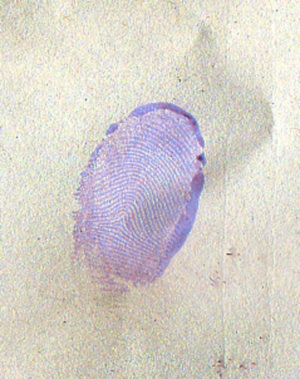Situation at the arrival
"In addition to personal data, such as nationality, age and sex, they ask migrants about their trip, possible facilitators and about their reasons for coming into the country.
In addition to the police identification interview, the police also take fingerprints and photographs for Eurodac, an EU fingerprints database of applicants for asylum and irregular immigrants, and for a file they open on each migrant. Depending on where the police interview is carried out, they may take fingerprints at the point of arrival or at the facility to which migrants are transferred."
(FRA - Fundamental Rights at Europe's southern sea borders, p.88.)

Police access to asylum seekers’ fingerprints
"It is essential in the fight against terrorist offences and other serious criminal offences for the law enforcement authorities to have the fullest and most up-to-date information if they are to perform their tasks. The information contained in Eurodac is necessary for the purposes of the prevention, detection or investigation of terrorist offences as referred to in Council Framework Decision 002/475/JHA of 13 June 2002 on combating terrorism or of other serious criminal offences as referred to in Council Framework Decision 2002/584/JHA of 13 June 2002 on the European arrest warrant and the surrender procedures between Member States.
Therefore, the data in Eurodac should be available, subject to the conditions set out in this Regulation, for comparison by the designated authorities of Member States and the European Police Office (Europol)."
(Regulation (EU) No 603/2013 of the European Parliament and the Council of 26 June 2013.)
Opinion of Peter Hustinx, European Data Protection Supervisor
"The net result of the proposed changes to the current system is that an asylum seeker can be identified from a crime scene if a finger print is found, while other individuals cannot, because similar data is not available for all other groups of the society. The Commission has not given any justification for a difference in treatment between asylum seekers and other individuals in this respect. Processing of EURODAC data for law enforcement purposes could therefore lead to a potential discrimination of asylum seekers, which, without justification, cannot be seen as a proportionate measure. [...]
The EDPS notes that over recent years the need of accessing EURODAC data for law enforcement purposes was extensively debated within the Commission, the Council and the European Parliament. He also understands that the availability of a data base with fingerprints can be a useful additional instrument in the combat of crime. However, the EDPS also recalls that this access to EURODAC has a serious impact on the protection of personal data of the persons whose data are stored in the EURODAC system. [...] As stated above, it should first be demonstrated that law enforcement access to EURODAC as such is necessary and proportionate."
(Peter Hustinx, European Data Protection Supervisor, September 2012.)
